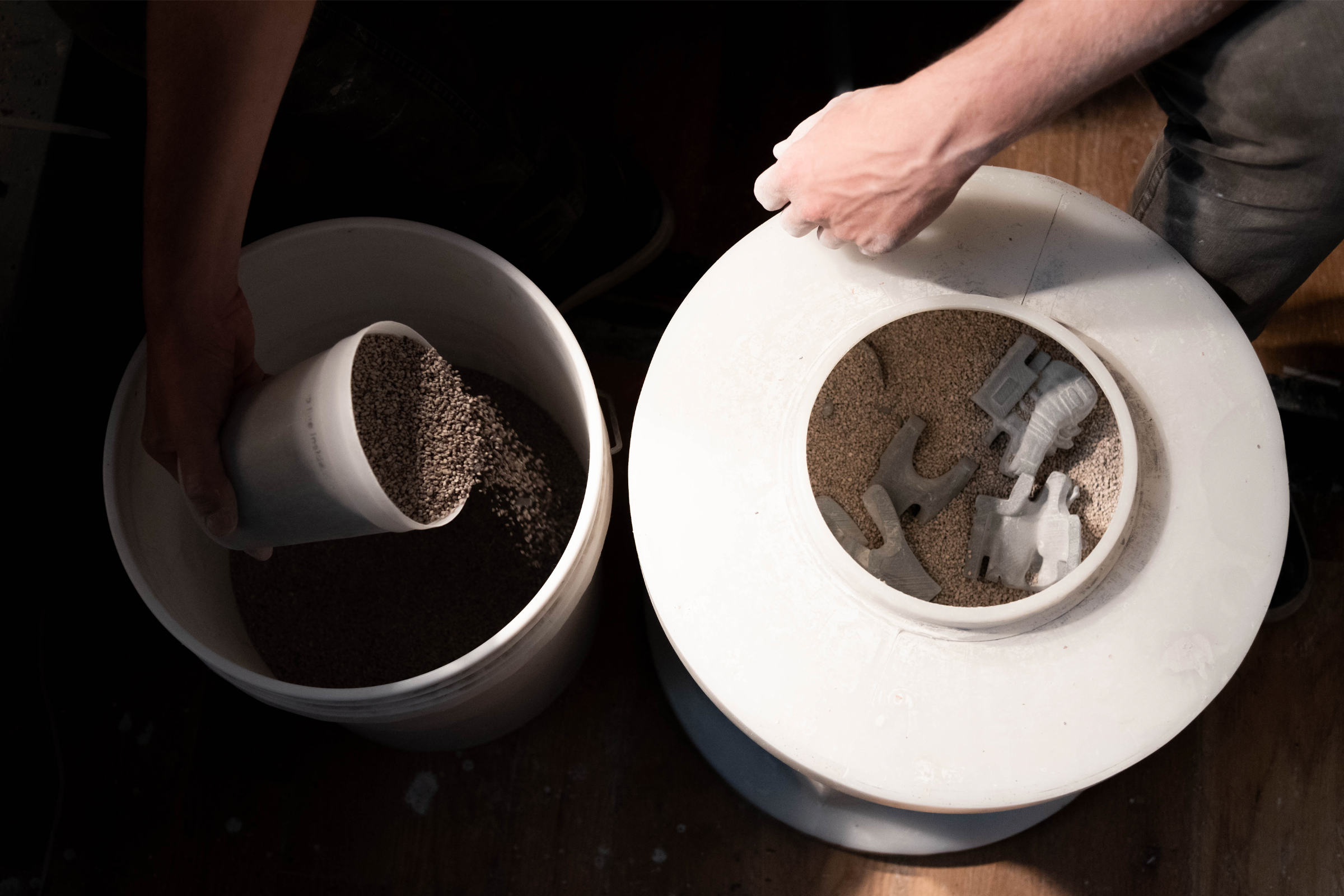Locknesters explore the way recognizable figures can be created from a group of abstract, unconventional geometries. Created by Fleet Hower, they range in scale from several inches to several feet, and in complexity from as few as three to over one hundred pieces. Locknesters explore intricacy and how the features of a figure can interact with the division lines of adjoining pieces. They also explore layering and the way divisions can make new patterns on the surface of a figure. Locknesters are made in Hower’s Brooklyn studio, this keeps the design and production process closely tied.
Locknesters are made using a mix of old and new techniques. Each object is digitally modeled on a computer, 3d printed, and then smoothed using a series of methods that include sanding, tumbling, and buffing. This process was developed over a period of trial and error, it is unique to Hower’s work. During the tumbling process pieces obtain a distinct coloration, making each one different. After tumbling, pieces are washed and receive a water-based lacquer. If a piece is part of a solid figure, it is assembled with the help of an internally-designed peg system.
Hower was born in Marion, Virginia, the child of an engineer and an artist, and from childhood has been interested in the way things fit together. He received a Master of Architecture from the University of Pennsylvania. Hower lives in Brooklyn, New York, with his wife and dog.























